

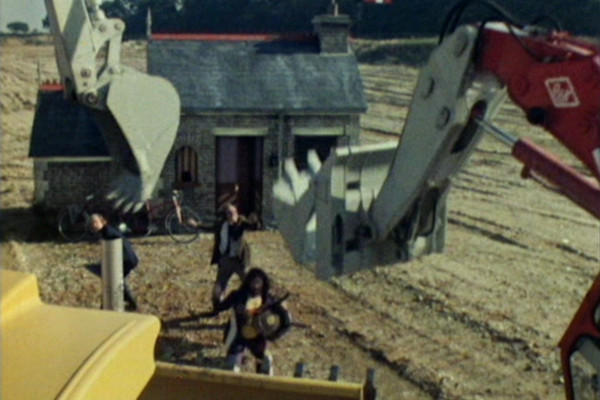
The opening episode of series three, and the only one, save for the special, to go out post-watershed, airing at 10:05pm. Unveiling a new title sequence, the clips take in not just moments from the first two series, but also elements of the specially filmed sketches they did for Engelbert with the Young Generation. Also a change to the series is that the film director of the first two series, Jim Franklin, took over as the Producer.
The New Office sees them still in social commentary mood, with Tim reading details of a kennel sale that will suit dogs "or forty Asians", and discussions on the price of housing and petrol in 1970s Britain. The main plot is the Goodies getting the titular new office, though it's not just a replacement, but an actual mobile station house that they cycle around on their trandem.
The exterior is seen prominently in series three and four, but very rarely after that (it can be briefly seen in series five's The Movies), so viewers who tuned in from 1975 onwards could well be forgiven for thinking that the Goodies lived in a regular office, particularly when, in The End, they get sealed in. That they're being sealed in to a mobile station office makes those events even more surreal, but the audience are allowed to forget this is the case. Later series are ambiguous on the subject, and it's not until they move to LWT that the Goodies definitely return to a tower block location.
In terms of further trivia, then World released one of their tie-in annuals for 1974, a book that was better than their usual efforts, and contained memorable material, although Graeme described it as "embarrassingly awful". One notable element was a behind-the-scenes feature on the construction sequences in this particular episode, showing how the effects were achieved.
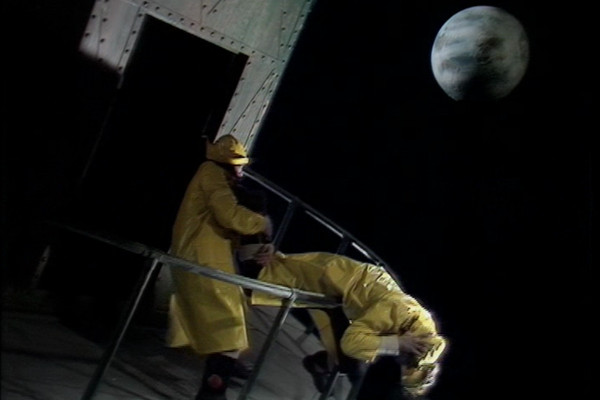
One of two cost-saving episodes, Lighthouse Keeping Loonies sees the trio alone looking after a lighthouse, before events contrive to send it into space like a rocket. These character episodes can be rewarding, but also questionable. While it's nice to explore the characters of the Goodies in episodes, it also makes you realise that they don't generally have characters beyond the broadly-defined, and whatever characterisation they do display is generally dictated by plot. This is not an express criticism of the series, merely to acknowledge that the series set up forces the leads into being archetypes, and that in exploring them further they have to invent "depths", rather than reveal them.
The programme also becomes unusual during series five in that the narrative consistency of earlier series is now completely disregarded. Not only do three episodes see them die at the final credits, but they also appear in the far future and in the far past... but tuning in the following week, the status quo is restored, and we're expected to accept them as the same characters. It's an unusual decision for a TV series of this type, almost Laurel and Hardyesque in that Stan and Ollie's marital and job status changed every short, but they were still "Stan and Ollie".
Speaking of Laurel and Hardy, then Tim (who has a trussed up bandage in the same formation as Stan's in Leave 'Em Laughing... a shot which is now one of the most iconic L & H images thanks to appearing in Friends) gets to do a cry which appears to be a homage. The group were fans of silent comedians, and would often give tribute to their influences, most notably in The Movies.
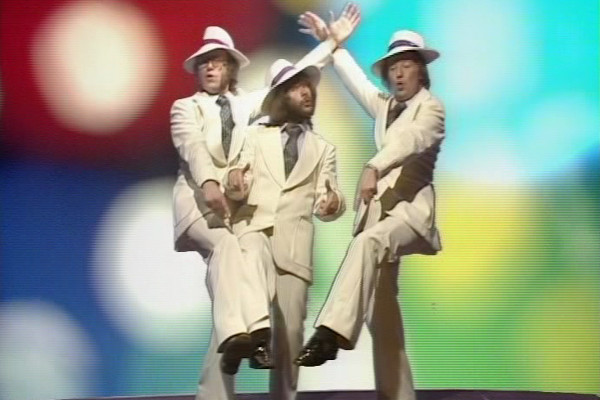
At this late stage in their career The Goodies were just as often choosing youth culture to lampoon as well as authority... they'd begun to aim down as well as up, and were effectively pushing themselves out of the zeitgeist. Although the men behind "The Funky Gibbon" could never have described themselves as "cool", and were effectively setting themselves up as out from society as early as "The Inbetweenies", never before had they written an episode where they're so rejected as musicians, or so opposed to current trends.
Punky Business features some catchy songs, and if "Shiny Shoes" is a blatant reworking of "Where Are They Now?" from The Goodies Rule - O.K.?, then Bill can be forgiven this once for recycling his own material. Yet having them pelted off stage, while funny, does cast them as unwanted losers, rather than childhood heroes.
While this is taking the programme way too seriously, also of note is that in many of these later episodes the Goodies would behave out of character, and be almost poisonous rivals, rather than three friends "Tim", "Bill" and "Graeme". For much of Punky Business they don't even particularly like one another, and oppress Tim... all of which is fine, but illustrates the rough continuing narrative of the earlier series, particularly the first four, is something which is now disregarded, and each episode may see a constantly shifting status quo.
The ending to this likeable episode is quite a racy one, even for the period, with the Goodies all marrying body parts of Jane Asher.... Tim gets her hand, Graeme gets her head and torso, but the one who looks the most pleased is Bill, running off with her body from the waist down.
Michael Palin refers to The Goodies many times in his published diaries, including criticisms of such elements as their "MOR" music career. During the July 1977 entries, Palin states that BBC producer "Jimmy" Gilbert had rejected two Goodies scripts for the very first time, on the grounds that they weren't funny enough. Bill Oddie insisted that the content regarding "Punky Business" was the reason it was rejected, a decision later rescinded. Bill also contradicted Palin's statement by stating that the earlier South Africa was also rejected, and extra jokes were requested before the BBC would agree to make it.
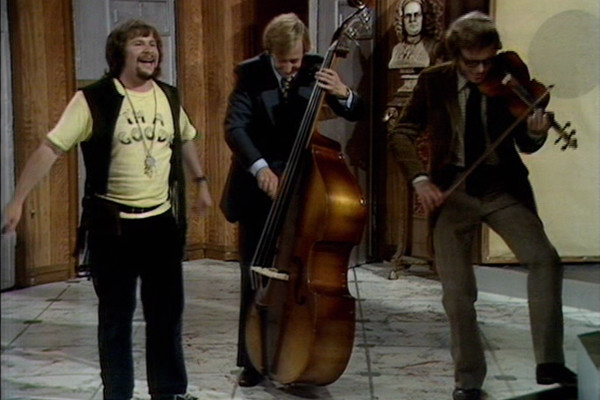
An episode that gives the impression it was written to give Bill chance to put more songs into the show, this one is inventive and lightly amusing; albeit one you may admire rather than love. Henry McGee does his best with his villainous role, the Goodies battling "supervillains" perhaps not one of the show's finest motifs. Yet look out for a scene where all three leads sing as a gospel troupe with afro wigs... they do so without blackface, something that would become one of the programme's most oft-used methods of humour in later series, and one of its most controversial.
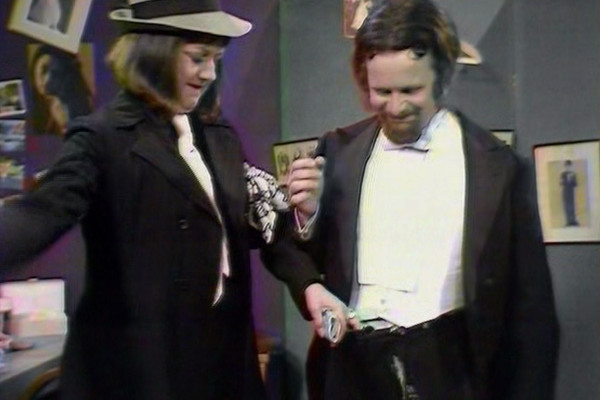
During the 1970s the BBC would erase many recordings to save on tape and space storage, with lots of archive television still missing from the archives. The Goodies fares better than most, with just a couple of episodes existing only in black and white, and only one (the original Kitten Kong) lost altogether. Come Dancing was a third episode that existed only on black and white film, before a low quality PAL video was discovered in the 1990s, and colour boosted for a DVD release. Although, as the image above illustrates, this is far from broadcast quality, it's a nice curio to own on disc, and a fairly amusing episode.
One highlight of many Goodies episodes are the times when Bill Oddie almost loses it and cracks up on camera. Notable moments include his dressing up as "Helga" in the LWT episode Robot, or slipping over on a rug in series three's Hunting Pink. Look out for the moment here where Joan Sims, as a Mafioso trying to break into ballroom dancing, pours milk down the front of his trousers... Bill can hardly contain his mirth. Lastly, a point of trivia is that while this was previously released on DVD with the title used here, the recent Complete BBC Collection lists it only as Dancing.
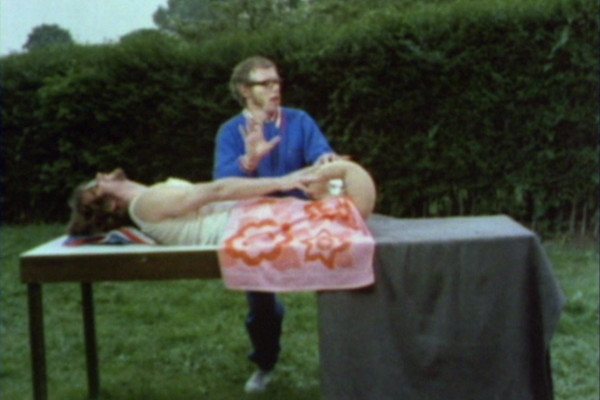
A fairly bland episode by the standards of The Goodies, but a hugely significant one. As just the second episode of series two, it marks a series of changes that would be taken up and expanded upon later in the programme, from fully kick-starting Tim's "Tory" persona, down to Tim and Bill having an argument, the first time on screen the regulars have had a serious disagreement.
Perhaps most significant of all is that this is the first time, chronologically, that the leads are transformed into human cartoons. Before this, other than "quick change" and Bill's lemon sherbert visions, the Goodies had done things that only normal humans can do... but now Graeme can roll up Bill's legs like they're carpets and unfurl them. This is also the first to sidestep a continuing loose narrative, whereby the Goodies would exist in the real world and accept consequences... here they fail in their mission to help in the Commonwealth Games, and so ownership of the Commonwealth is given over to the Easter Islands.
This is the second of two episodes (along with Playgirl Club) to exist only in black and white, and the available footage is in quite bad condition. However, the aforementioned "Bill's bending legs" sequence was selected to appear in the title sequence each week, meaning a screen capture of colour material from the episode was possible.
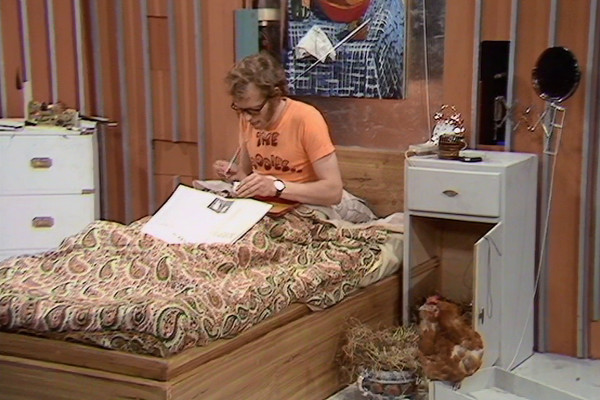
Likeable and admirable, Snooze is nevertheless a lighter, gentler take on the format. An age when people would laugh at Graeme getting his own breakfast in bed by a system of pullies, or the team inventing a high-powered hot chocolate that can send you to sleep. It's not "edgy" comedy, despite the presence of the suggestion that Bill spends his time in bed masturbating. It's very much in the ethos of late 60s TV comedy, which could lean more towards a staid narrative, and veer away from coarser, more spontaneous material. This is not an express criticism of Snooze, more an acknowledgement that it, along with the majority of the first series, had a very different feel to a lot of what came afterwards.
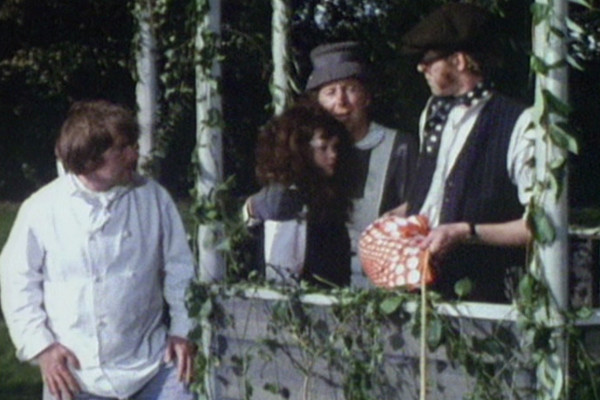
Possibly the least typical episode of the first series, a macabre tale with the Goodies childminding and looking after a haunted house. The humour isn't as overt, and the pace more relaxed, though there's an increase in surrealism. As early as series two The Goodies could be human cartoons, but this first run sees them only react to situations that could conceivably happen, odd sight gags like the "quick change room" or Bill's sherbert aside.
For the series, Bill Oddie and Michael Gibbs would craft songs to underscore the programme's slapstick montage sequences. One of the best would be "Needed", which is somewhat undermined by it appearing in every single series one episode, and eight of series two. More unique here is the second song, "Are You Coming Out To Play?", that adds a wistful quality to a very off-beat episode.
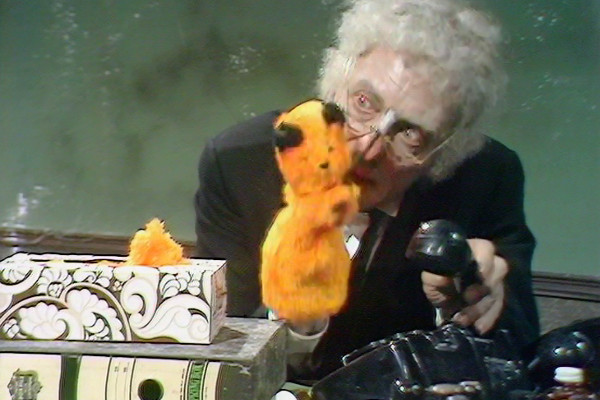
A broad and amusing satire on the NHS, this one sees the Goodies set themselves up as an alternative service and, thanks to Graeme's elixirs, put the NHS out of business. There's lots of corny gags that work on style alone (Tim offering to show Bill and Graeme the ropes sees him literally show them some ropes) and the playing is infectious. Look out for Harry H. Corbett in a guest role (then just one series and two Christmas specials away from the end of Steptoe and Son), getting a nice in-joke as he plays with a Sooty glove puppet... Sooty's creator Harry Corbett being the man who forced him to add the "H" to his name to get into Equity.
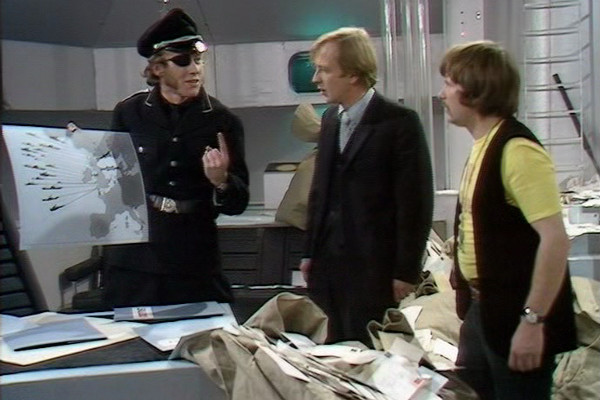
Probably the most significant episode of the first series, in that the team realised by having a guest star as an antagonist each week it meant they were giving away the best lines, and so devised the idea of one of them turning against the others. Whereas later this would become wilder and sillier, here it's still tied into the plot, Graeme's plans of world domination explained away as a nervous breakdown.
But in having internal conflict they gave the series an extra layer of comedy, even if the other episodes where they're friends are quite charming as a result. Also of note is that the regulars are becoming more comfortable at this stage, and reacting to the audience more, pitching their performances around the crowd reactions, and that the Goodies set up their own services for people here, rather than being hired.
Often with series of this vintage, there'll be material that has been rendered retroactively uncomfortable to watch. Rolf Harris is mentioned twice in this first series, and even has a 1975 episode centred around him. The first episode, Beefeaters, has Bill hallucinate the image of Jimmy Saville, and so hindsight tells us that Tim's reason for wanting to be a disc jockey isn't as funny as it seemed at the time: "have hundreds of little groupie girls offering themselves to me."